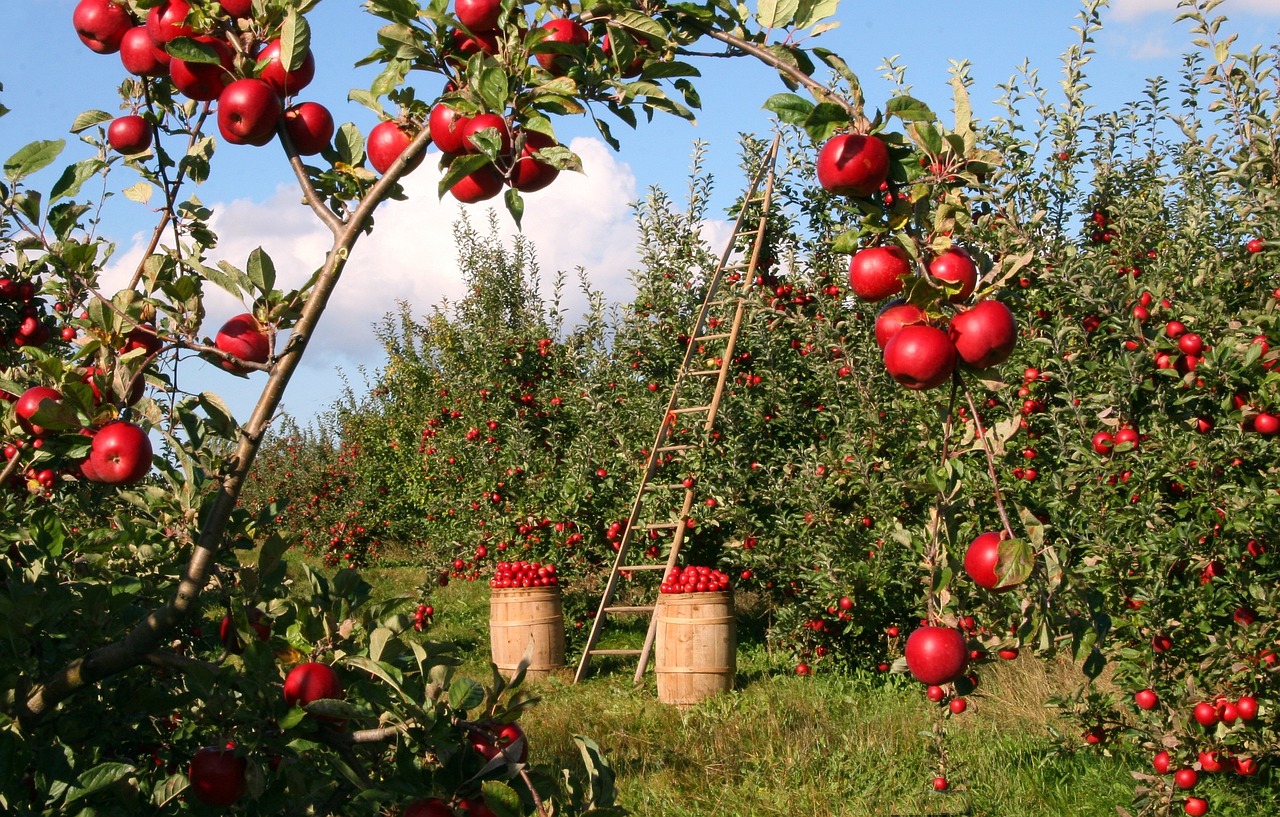What Are the Emerging Trends in Sustainable Agriculture and Farming Practices?

From farm to fork, the agriculture industry plays an indispensable role in our daily lives. It’s not just about the food we eat; it’s about managing resources, preserving our ecosystem, and sustaining our communities. Today, we are witnessing an exciting epoch of change where traditional farming methods are merging with tech-driven solutions. This transformation aims to foster sustainable agricultural practices that respect the earth and ensure food security for future generations. This article will delve into the emerging trends in sustainable agriculture and farming practices that are shaping the future of food production.
Technology-Driven Agricultural Practices
The Internet of Things (IoT), Artificial Intelligence (AI), and Big Data are no longer just buzzwords; they’re at the forefront of sustainable farming practices. These technologies are helping farmers efficiently manage their resources and make data-driven decisions.
A lire également : What Are the Emerging Trends in Home Automation and Smart Living?
Precision agriculture, for example, uses GPS, IoT sensors, and data analytics to monitor and optimize crop health, soil condition, and water usage. This technology allows farmers to customize their irrigation and fertilization practices based on real-time data, reducing waste and improving crop yields.
Drones and satellite imagery also play a significant role in crop management. These technologies provide detailed aerial views of farmland, helping farmers identify problems such as pest infections, water stress, or nutrient deficiencies early on. As a result, farmers are able to address these issues promptly, preventing crop loss and saving on resources.
A découvrir également : What Are the Latest Trends in Sustainable Fashion and Ethical Shopping?
Furthermore, AI-powered automated systems are making waves in the farm sector. From autonomous tractors to robotic harvesters, these systems are enhancing efficiency and reducing the need for manual labor. By embracing these cutting-edge technologies, farmers are making strides toward a more sustainable and productive future.
Soil and Water Management for Sustainability
Sustainable farming is deeply connected with the conservation of our most vital resources – soil and water. Hence, efficient management practices in these areas are essential.
A rising trend is the use of cover crops to improve soil health. These plants are grown not for harvest but to enrich the soil. They prevent erosion, improve soil structure, enhance nutrient availability, and increase biodiversity. By adopting this practice, farmers are contributing to the overall sustainability of the agricultural ecosystem.
Water management is equally critical. Drip irrigation systems, for instance, are gaining popularity for their efficiency. This method drips water directly to the plant roots, minimizing evaporation and runoff. It’s a practical solution for areas with water scarcity, and it helps growers save on water costs.
Moreover, the use of technology in water management is also on the rise. For example, smart irrigation systems can adjust watering schedules based on weather forecasts and soil moisture levels, ensuring that crops receive just the right amount of water they need.
Transition to Organic and Regenerative Farming
As consumers become more conscious about the food they eat, the demand for organic, locally sourced produce is growing. This shift is encouraging farmers to adopt organic and regenerative farming practices.
Organic farming eschews synthetic fertilizers and pesticides in favor of natural alternatives, promoting biodiversity and maintaining soil fertility. It’s a holistic approach that creates a balance between food production and environmental preservation.
On the other hand, regenerative agriculture goes a step further. This practice focuses on restoring degraded soils and improving biodiversity. Techniques used include crop rotation, intercropping, and the use of animal manure. By adopting these practices, farmers are not just producing food; they’re also revitalizing the land and nurturing the environment.
Vertical and Urban Farming: The Future of Agriculture
As urban populations expand, feeding the city dwellers becomes a challenge. Vertical and urban farming offer innovative solutions to this problem.
Vertical farming involves growing crops in stacked layers often in a controlled, indoor environment. This method uses significantly less land and water than traditional agriculture, and it eliminates the need for harmful pesticides. Moreover, it allows crops to be grown year-round, regardless of weather conditions.
Urban farming, on the other hand, makes use of city spaces such as rooftops, balconies, and abandoned lots to grow food. It’s an effective way to bring agriculture into the city, ensuring fresh, local produce is available to urban residents.
These trends not only help address food security issues in urban areas, but they also contribute to sustainability by reducing the carbon footprint associated with transporting food from farms to cities.
Embracing the Role of Smallholder Farmers
Smallholder farmers are often overlooked in discussions about sustainable agriculture. However, they manage over 80% of the world’s farmland and play a crucial role in producing food for their local communities.
Promoting sustainable practices among smallholder farmers can have a significant impact on global food security and environmental conservation. Initiatives to support these farmers are increasing, from providing access to farming technologies to offering education on sustainable farming methods.
By empowering smallholder farmers, we can foster a more inclusive and sustainable agricultural system. It’s a crucial step towards achieving a future where everyone, regardless of where they live, has access to safe, nutritious, and sustainably produced food.
In conclusion, as we move forward into this new era of agriculture, it is clear that sustainability is no longer just an option; it is a necessity. The emerging trends in sustainable farming are reshaping the way we produce and consume food, driving us toward a healthier and more sustainable future.
Incorporating Climate Change and Renewable Energy in Agriculture
The global phenomenon of climate change has posed significant challenges to the farming sector, making it imperative for sustainable practices to address these issues. Rising temperatures, unpredictable rainfall patterns, and an increase in extreme weather events have a direct impact on crop yields and food production. As a consequence, farmers worldwide are implementing methods that can withstand these climatic conditions while safeguarding the environment.
Adoption of renewable energy sources in farming is one such emerging trend. Solar-powered irrigation systems, for instance, are replacing conventional, energy-intensive ones. These systems use solar panels to draw water from sources and distribute it across the fields, reducing dependency on non-renewable energy sources and cutting down CO2 emissions. Similarly, wind turbines are being used to power farm operations, contributing to a more sustainable energy matrix in agriculture.
Moreover, the sector is also focusing on carbon farming, a method designed to sequester high levels of carbon in the soil. This practice not only addresses the greenhouse gas problem but also enhances soil health, improving its fertility and water retention capacity. By mitigating the impacts of climate change and promoting renewable energy use, these trends are carving a sustainable path for the future of agriculture.
Leveraging Digital Agriculture for Long-Term Benefits
The age of digital agriculture is upon us, with precision agriculture becoming the norm rather than the exception. Utilizing advanced analytics, robotics, and machine learning, today’s farmers can make real-time decisions that optimize their resources and maximize output.
Machine learning algorithms are particularly useful in predicting crop diseases and pests. By analyzing vast datasets of weather patterns, crop histories, and soil conditions, these algorithms can alert farmers of potential threats before they become unmanageable, safeguarding both yield and quality.
Similarly, farm management software allows farmers to monitor their operations closely. These applications provide a unified platform for tracking crop growth, managing workers, overseeing finances, and much more. This streamlining of tasks leads to more efficient operations and better yield predictions.
Furthermore, blockchain technology is making a splash in the agricultural world. Offering transparency and traceability, it’s helping to build trust in the food system. Consumers can track their food’s journey from farm to table, ensuring its quality, authenticity, and sustainability.
Conclusion
The world of agriculture is in a state of constant flux, with new trends and technologies shaping its future. These trends, rooted in sustainable farming, are not just about feeding the world; they’re about nurturing the planet and its resources.
From precision agriculture that leverages analytical data for optimal farming to the use of renewable energy sources, these practices ensure long-term viability of the sector. Vertical farming and digital agriculture are redefining food production, making it more resilient, sustainable, and inclusive.
Simultaneously, the transition towards regenerative agriculture, organic farming, and the empowerment of smallholder farmers reflects a more holistic approach. It aligns food production with nature, ensures the health of our soils, and promotes biodiversity.
In essence, these emerging trends in sustainable agriculture are forging a path towards a future where food systems are in harmony with the environment. As we continue to innovate and evolve, the goal remains clear: a sustainable, resilient, and productive agricultural sector that can feed the future while preserving our planet.
